MAKS 2019 - Aerosalon Zhukovsky / Moscow
Update: 2019/10/30 by Robert Kysela / CHK6
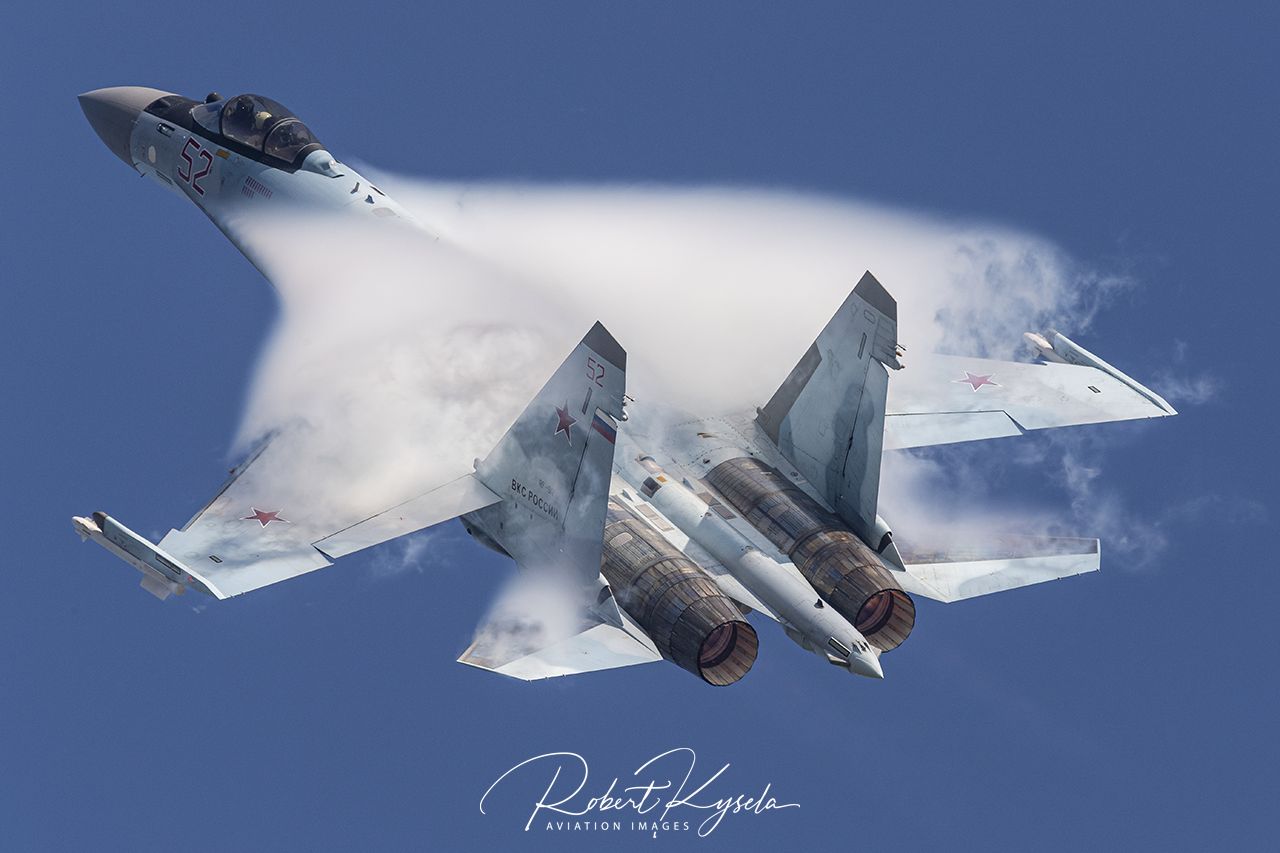
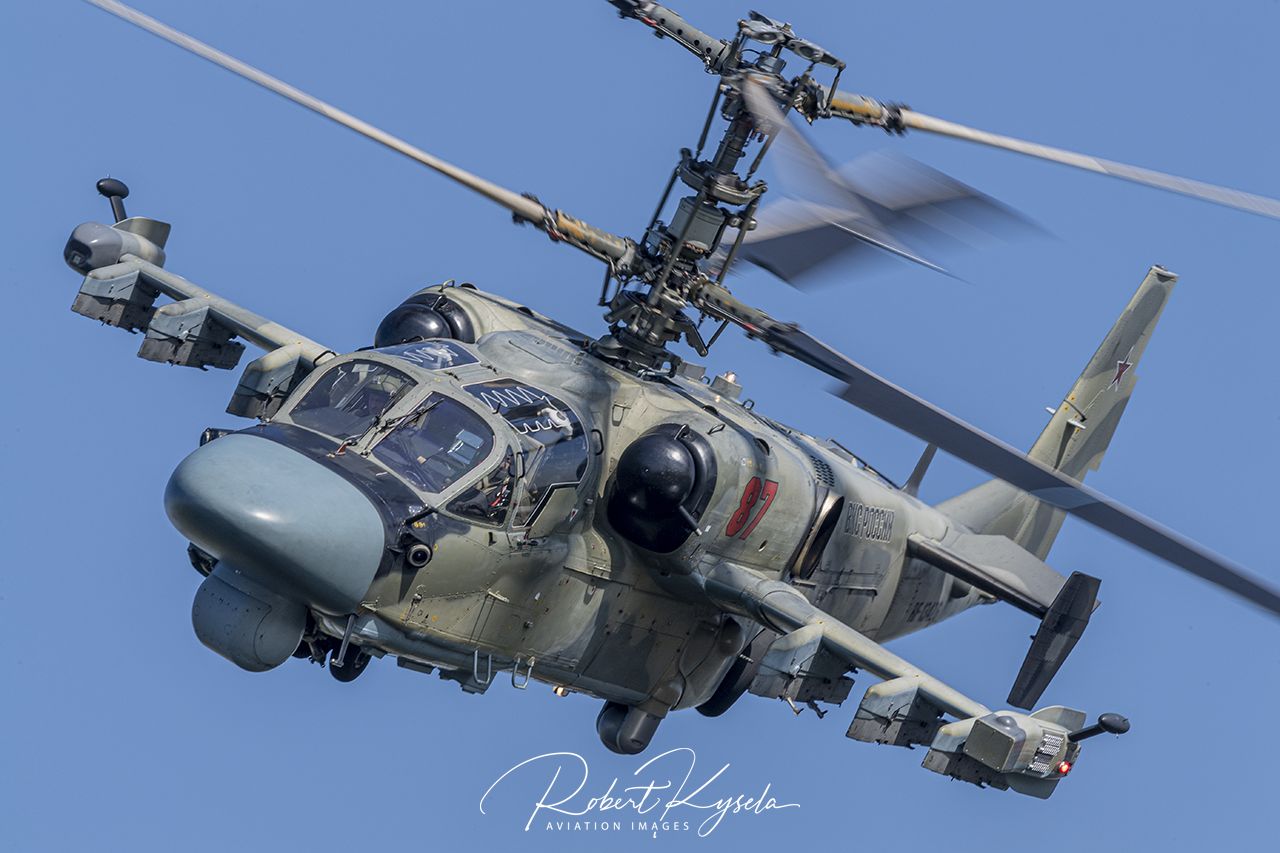
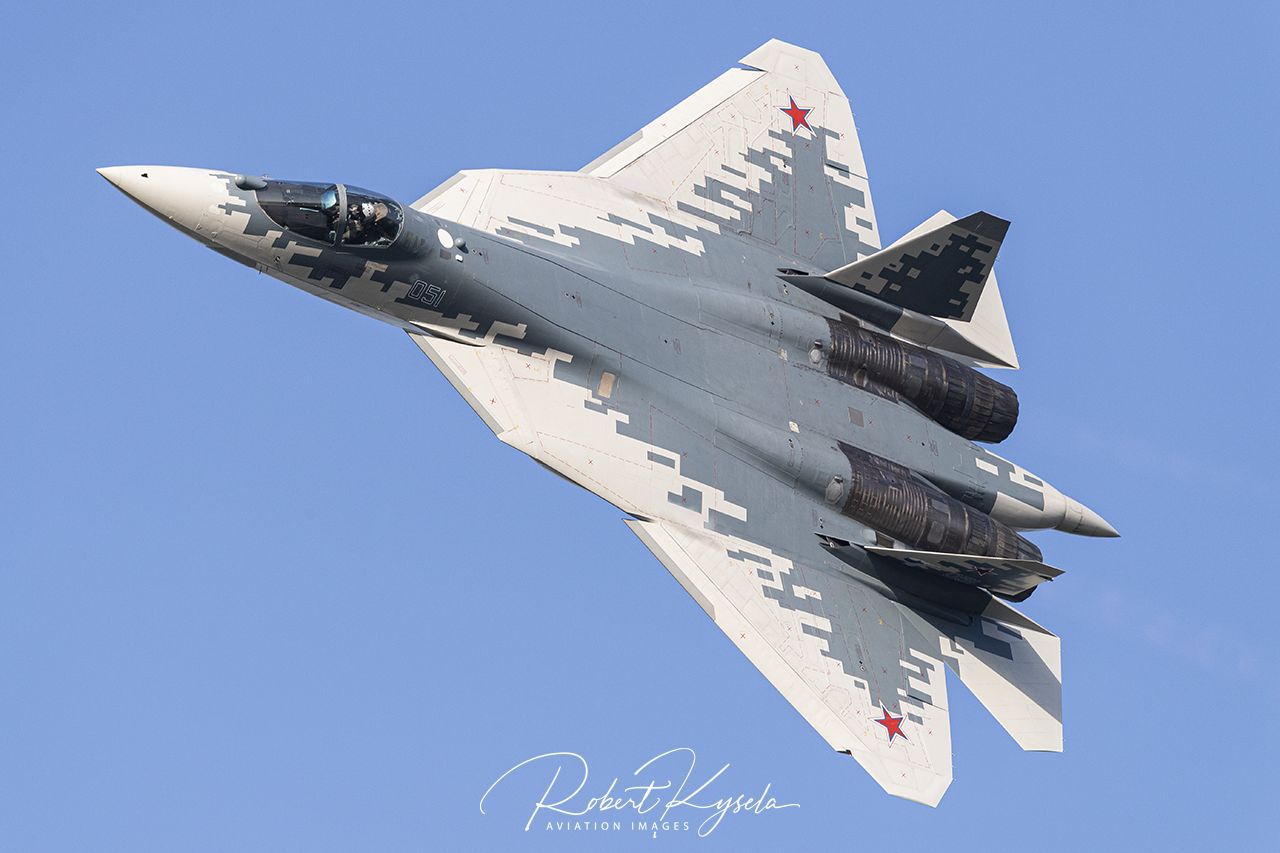
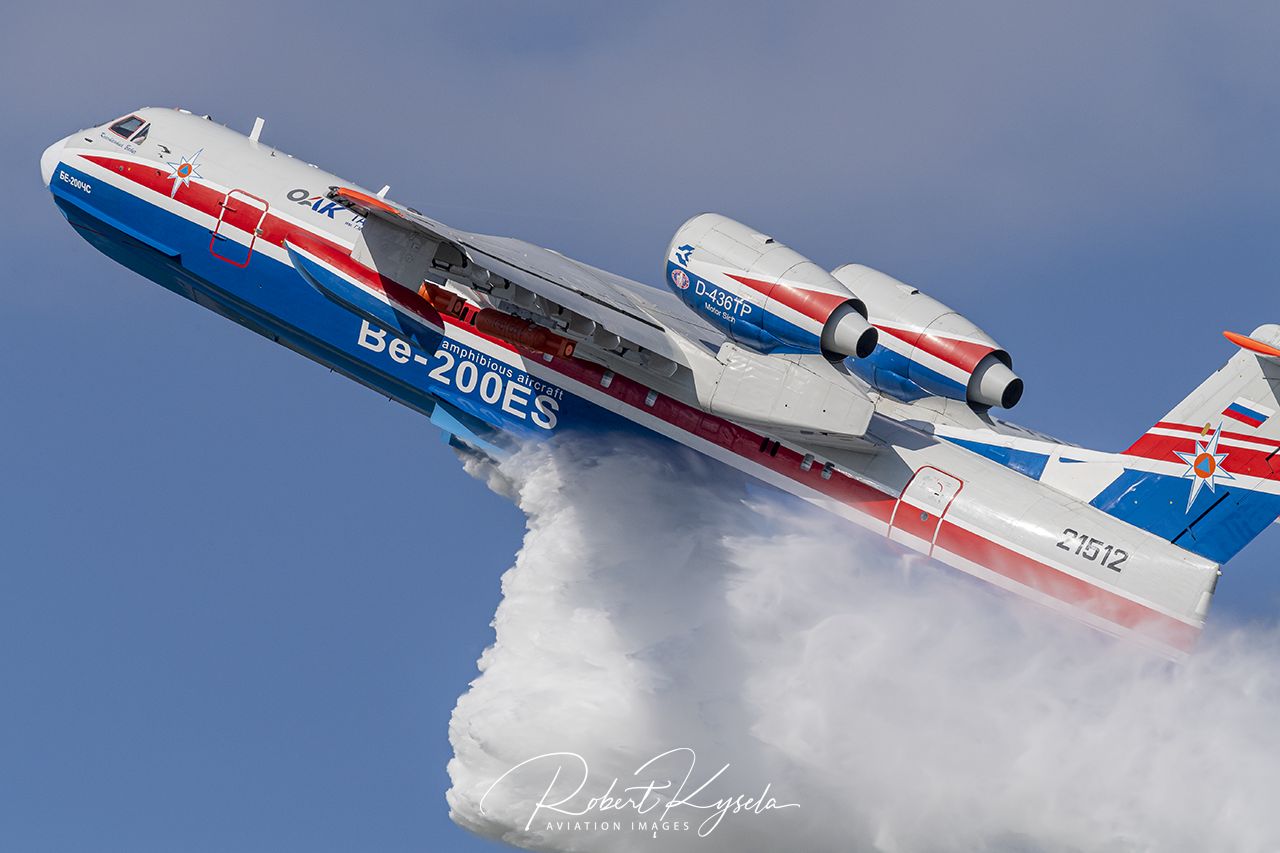
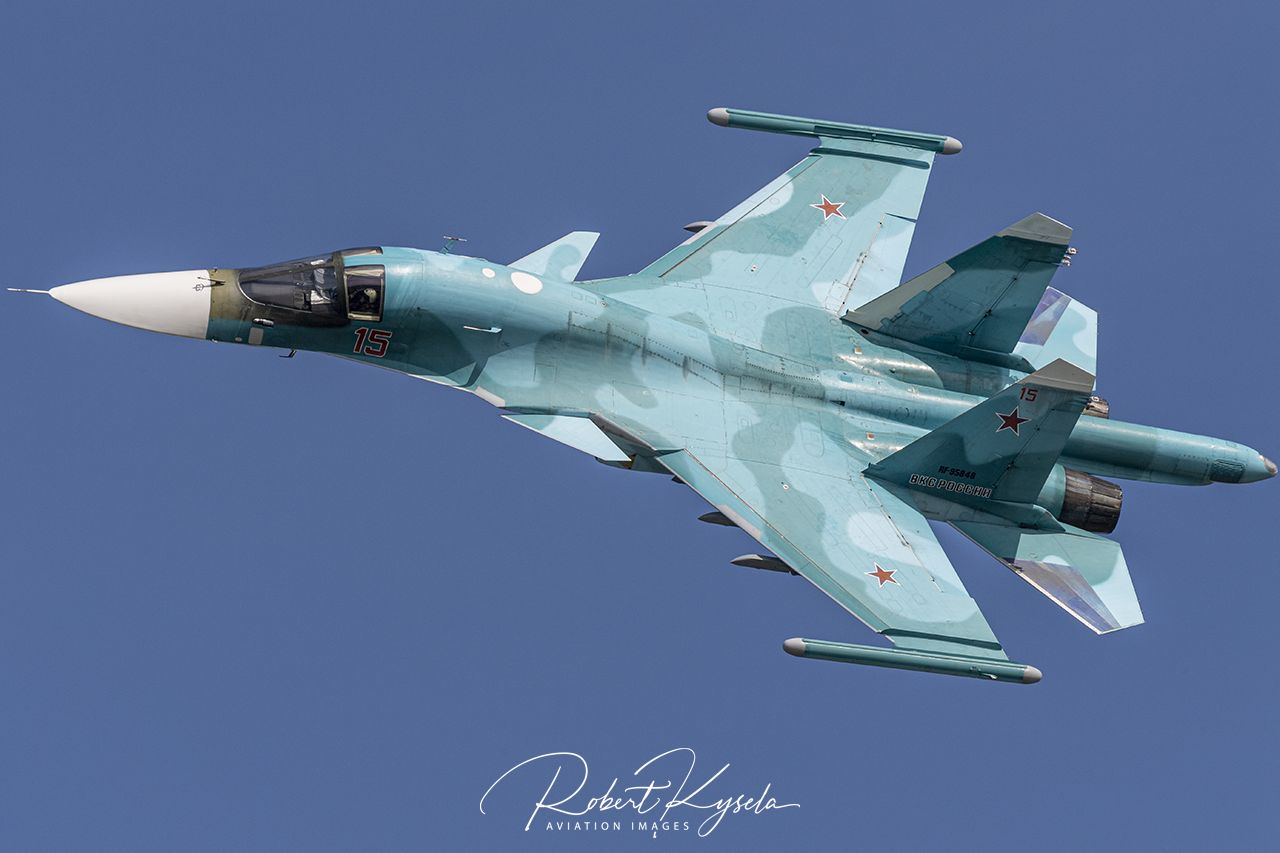
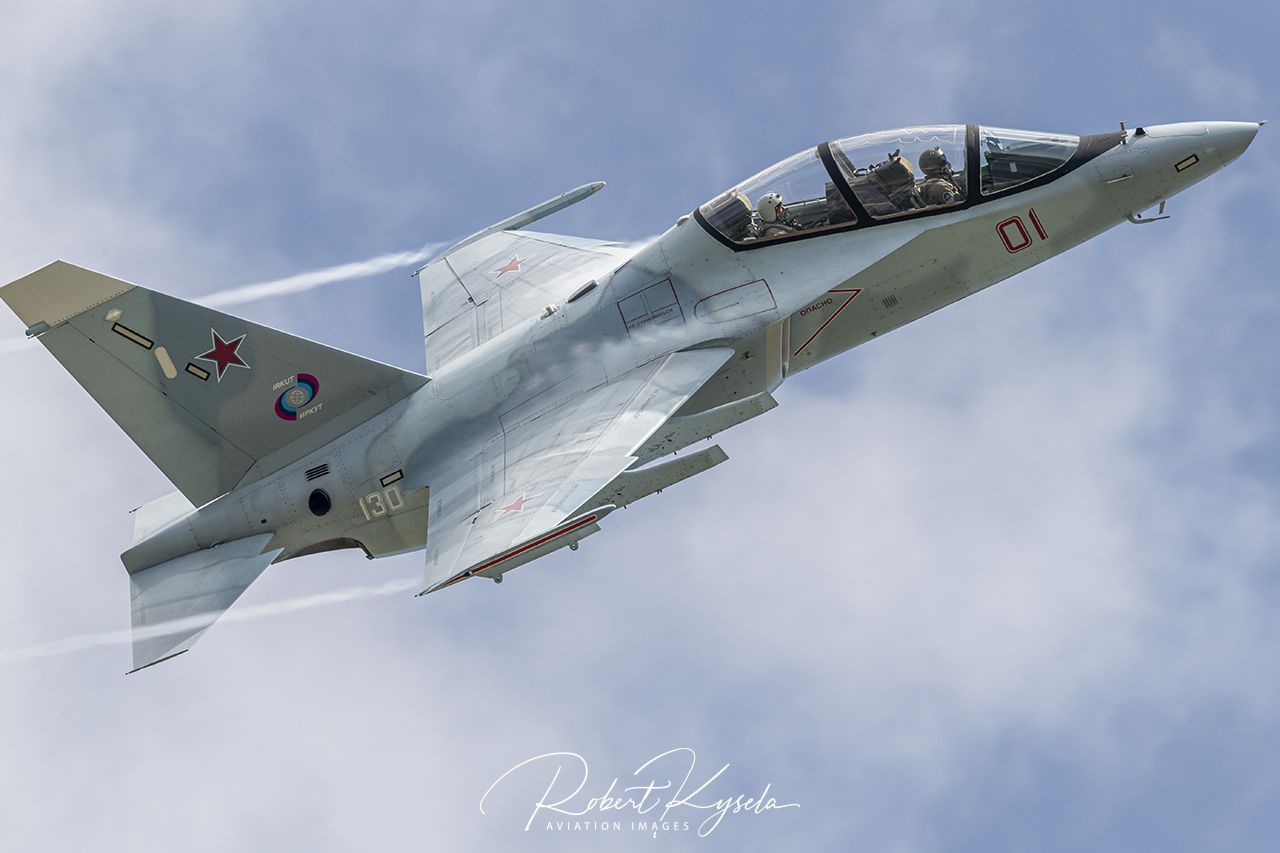
The official opening of the 14th International Aerosalon in Zhukovsky/Moscow Oblast – MAKS took place on 27 August 2019 in the presence of Russian President Vladimir Putin and Turkish President Recep Tayyip Erdogan. After expulsion of the Turks from the prestigious F-35 program by the US administration, Erdogan’s decision to demonstratively show himself with the Russian President at MAKS was a clear signal to Washington.
It remains to be seen whether Turkey will actually take the additional step of procuring Russian fighter aircraft
R. Kysela
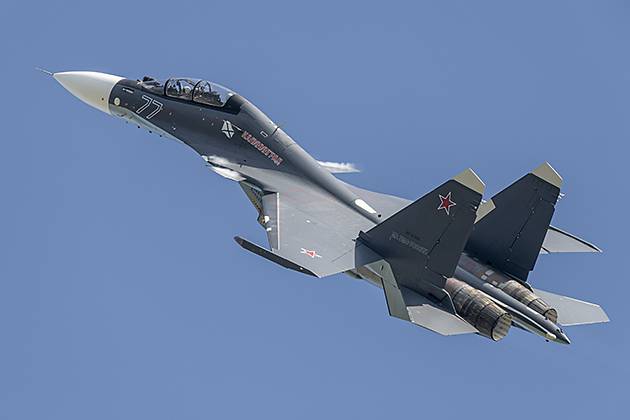
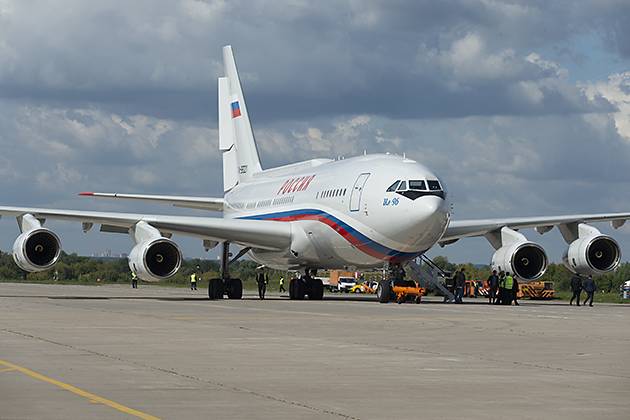
Russia’s decision to acquire the latest Sukhoi Su-57E fighter aircraft and to actively pursue its further development is much more than just symbolic. The Turks’ interest in the latest Russian hardware is totally understandable, at least from a Turkish point of view. After all, the decision by the US to throw the Turks out of the F-35 program has put Erdogan in a precarious position. The reason for this decision was the due to the fact that Turkey had acquired the ultra-modern Russian S-400 Triumf (NATO code: S-21 GROWLER) air defence system – from the Americans’ point of view this was clearly an affront and above all represents a major security risk. By acquiring both the F-35 and the S-400, it would be easy to establish any strengths or weakness of the F-35 for air defence purposes. If this data were made available to the Russians in any form whatsoever, it would have enormous tactical implications for current and future users of the standard fighter aircraft of NATO and its allies. At least, that’s the argument proposed by the Americans. It remains to be seen whether Turkey will actually take the additional step of procuring Russian fighter aircraft (the Su-57E and the Sukhoi Su-35S were also under discussion). By the end of MAKS on 1 September 2019, no decision has yet been announced.
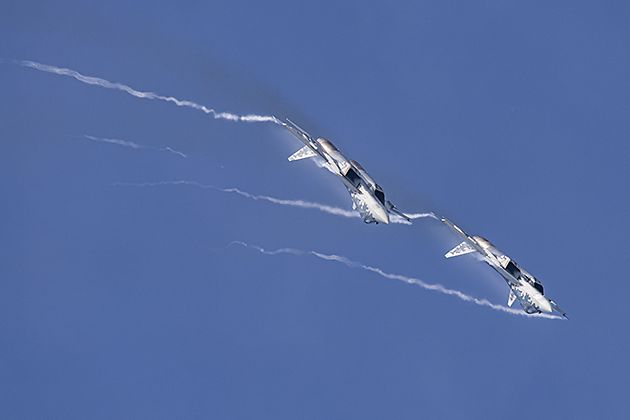
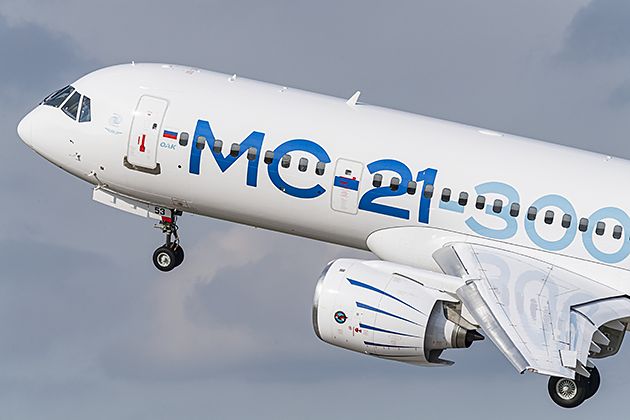
Beside inspection of the aforementioned Su-57 (seen at MAKS 2019 for the very first time in the static display) the Turkish president could also see the newest Russian civil aircraft type, the Irkut MC-21-300, which made its debut at MAKS 2019 and flew before the general public for the very first time. The impressive flight demonstration of the first prototype was also one of the highlights of this year’s event for many visitors. While the appearance of this machine was very symbolic, it is nevertheless a clear sign that the Russian aviation industry is quite able to keep up with its western counterparts.
The decisive factor for the commercial success of the MC-21 will not only be the advanced technological aspects of the aircraft, but the ability of the Russian manufacturer to guarantee worldwide maintenance and supply of spare parts.
R. Kysela
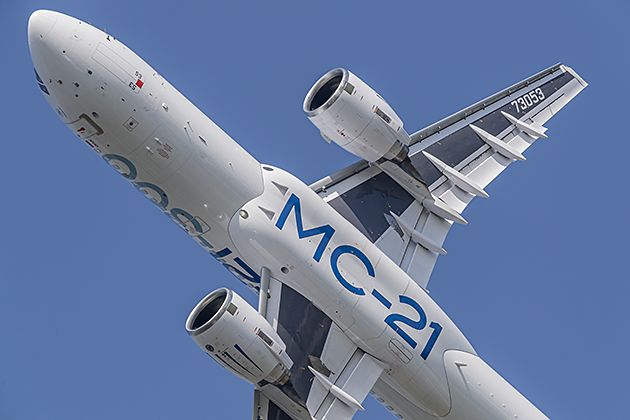
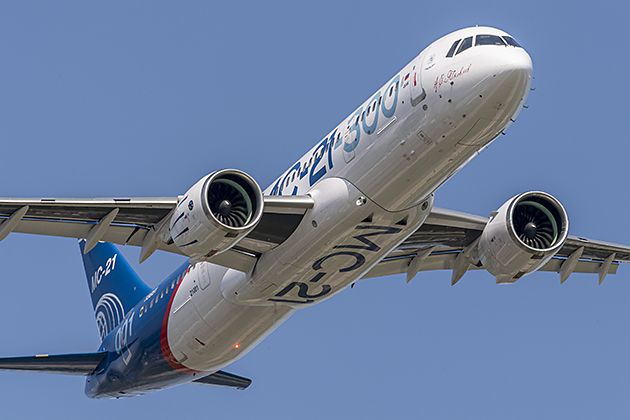
The MC-21 (MS-21) (written correctly, the Cyrillic “C” is an “S” in the Latin alphabet) is manufactured mostly from composite materials and has the potential to secure a significant market share of the short to medium haul commercial aircraft segment. Its potential competitors are all based on designs that have been around for many years (52 years for the Boeing 737 and the maiden flight of the Airbus A320 took place on 22 February 1987). The decisive factor for the commercial success of the MC-21 will not only be the advanced technological aspects of the aircraft, but the ability of the Russian manufacturer to guarantee worldwide maintenance and supply of spare parts. Since the Boeing company has been marginalized (for an indefinite period) due to problems with the 737 MAX, Irkut, which belongs to the Russian UAC Consortium (UAC = United Aircraft Corporation, or in Russian: OAK = Objedinjonnaja Awiastroitelnaja Korporazija), could secure a piece of that cake – that’s provided they don’t make the same mistakes they did with the smaller Sukhoi SSJ100! The fact that one of the MC-21 prototypes took part in the TEKNOFEST in Istanbul and only three weeks following MAKS shows that it has become quite serious.
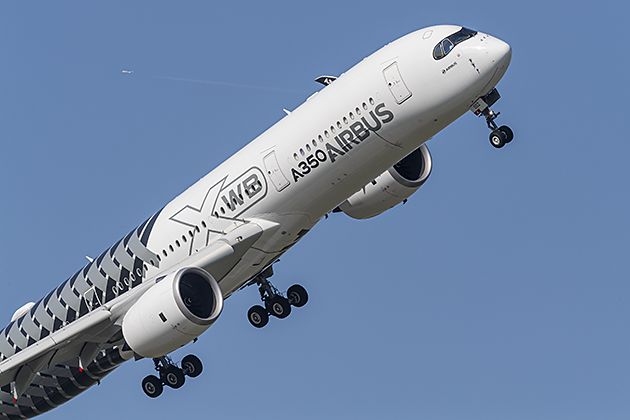
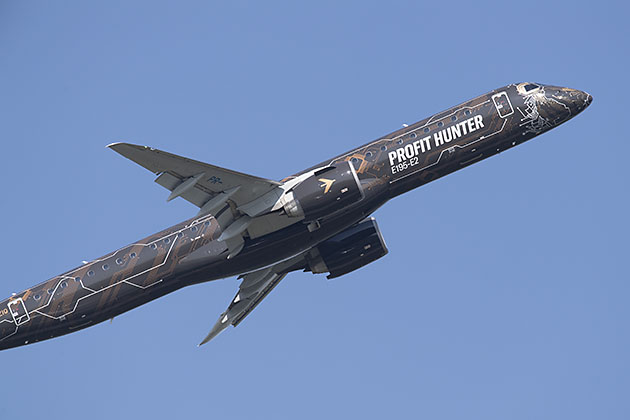
Apart from the civilian MC-21-300, the flying program at this year’s MAKS did not have anything really new to offer, at least in comparison to previous years. It was hoped by many enthusiasts that this year’s increased Chinese participation will also be reflected in the flying programme, however this was not fulfilled. Only in the civil sector could non-Russian aircraft be seen in flight, above all the Airbus A350-900 XWB. But since this powerful aircraft was already present at the MAKS 2017, the wow factor was not that strong. Nevertheless, the flight demonstration of this majestic looking giant was a real treat for every lover of modern aircraft technology. Another model of western production, and unfortunately only to be seen in the static display, was the largest aircraft ever produced by the Brazilian manufacturer EMBRAER, the E195 E2. The example at MAKS was painted in a very attractive livery with almost provocative lettering (Profit-Hunter). EMBRAER is known for promoting its airplanes using extraordinary paint schemes. As the E195 is currently on a worldwide promo tour, it had to leave the event on Friday before the actual show commenced.
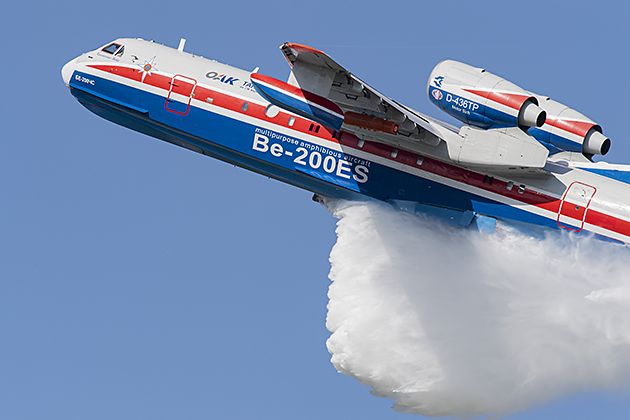
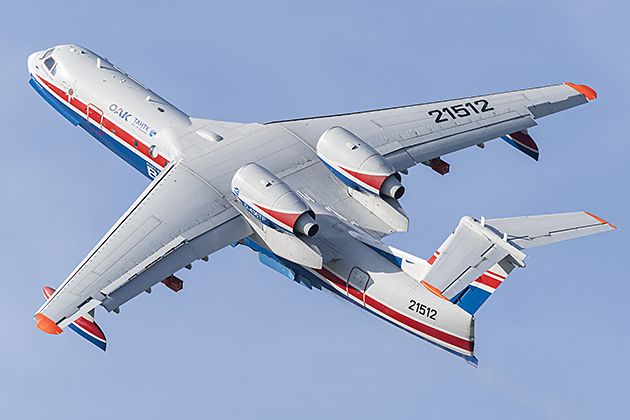
The Beriev Be-200ES is always a welcome guest at every MAKS with this versatile twin-engine amphibious aircraft providing a spectacular water drop in the colors of the Russian flag. The first flight of the prototype took place on 24 September 1998. Although the Be-200 is the most advanced and powerful water bomber (the Be-200 can carry up to 12,000 liters of fire extinguishing retardant – twice the amount of the Canadair CL-415), however thus far its commercial success has been limited. This is all the more incomprehensible as this machine has proven its great potential in various firefighting operations (Portugal, Israel or Greece) and only in more recent times it has been used outside Russia. For example, the US company SEAPLANE GLOBAL AIR SERVICES ordered four machines last September with the option of a further six.
The SaM146 engine was developed in cooperation between the French company SAFRAN AIRCRAFT ENGINES (formerly SNECMA) and the Russian NPO SATURN Group.
R. Kysela

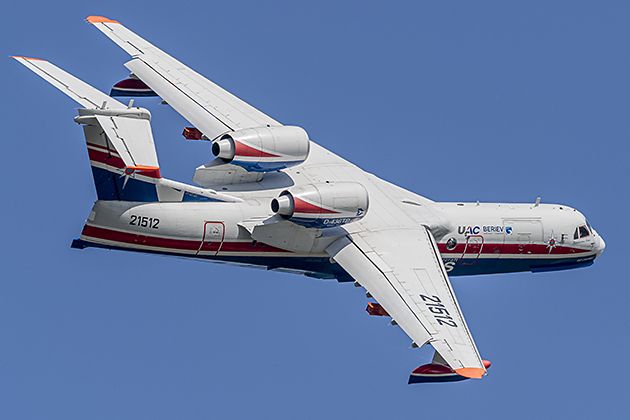
One probable reason for the lack of (international) sales success is the engines. The current version of the Be-200 has two D-436TP turbofan engines of Ukrainian manufacturer by Motor Sich JSC. These are to be replaced by a variant of the PowerJet SaM146 engine. The SaM146 was developed for the Sukhoi SSJ100 and when compared to the D-346TP has lower fuel consumption and higher performance. This will increase the service ceiling of the aircraft from a relatively meager 8,000m to over 10,000m. The SaM146 engine was developed in cooperation between the French company SAFRAN AIRCRAFT ENGINES (formerly SNECMA) and the Russian NPO SATURN Group. The first aircraft with new SaM146 turbines is scheduled to make its maiden flight next year.
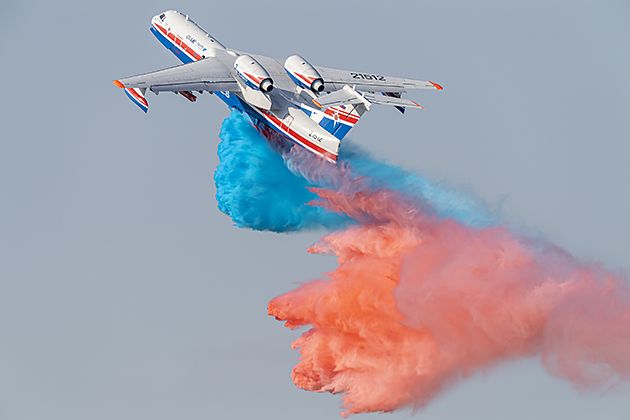
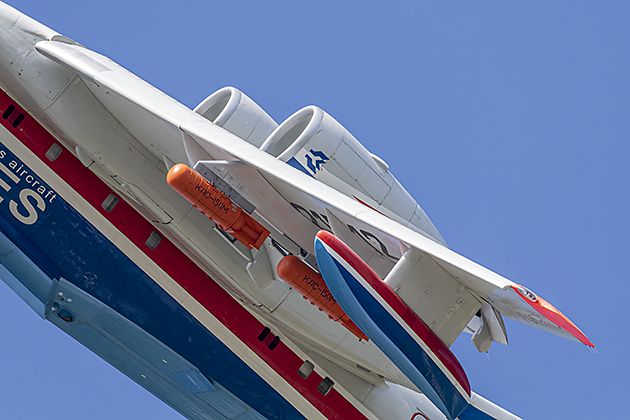
Airplanes such as the Be-200 or the Canadair CL-415 are often referred to as water bombers. If you took a close look at the Be-200 at MAKS, you could actually see four bombs! Two bright orange, bomb-shaped containers each hung from two underwing pylons. Well of course, these are not really bombs, but KAS-150M sea rescue containers. The Beriev Aircraft Company thus demonstrates the versatility of its product as in addition to its role as a water bomber, the Be-200 can also be used in the Search and Rescue (SAR), Maritime Reconnaissance (MR) and Anti-Submarine Warfare (ASW) roles or with a maximum capacity of 72 passengers it can also be used as a commercial passenger aircraft.
The Be-200 can then fly to the drop location at over 600km/h (maximum speed is about 710km/h).
R. Kysela

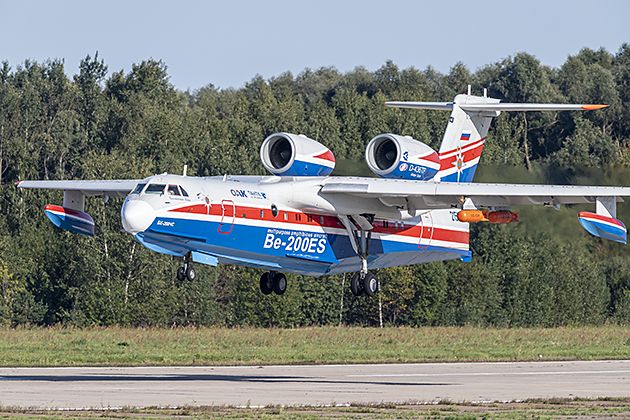
The flight display at MAKS particularly demonstrated the enormous maneuverability of the Be-200ES. In addition to the already mentioned large water tanks, another advantage is its relatively high speed. The Be-200 only has to navigate to the nearest lake or a slightly larger river where can fill up both of its water tanks in only 14 seconds. The machine lands on the water and reduces its speed to a maximum of 190km/h (this corresponds to about 86% of the take-off speed). The Be-200 can then fly to the drop location at over 600km/h (maximum speed is about 710km/h). Due to its ability to land on water, a seaplane such as the Be-200 has a clear advantage over land-based fire-fighting aircraft.
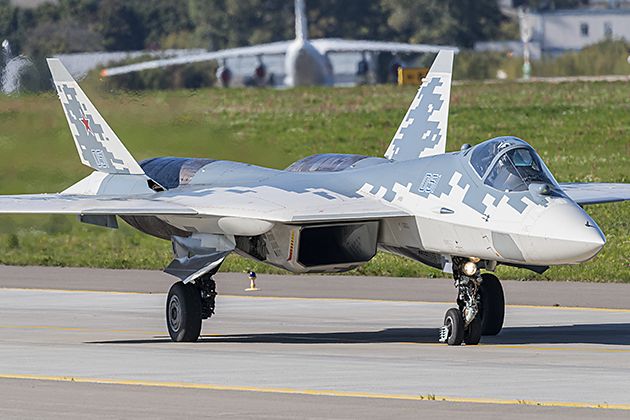
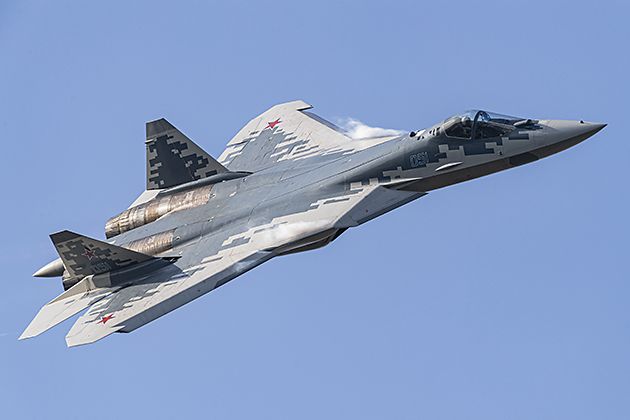
As always, the military air displays at MAKS were spectacular. The new Sukhoi Su-57 especially were a key point of focus of this year’s show with four being flown in formation and in the solo displays (Bort 051-054). Series production of this 5th generation multi-purpose fighter jet has only just started. According to unconfirmed reports, the total number of aircraft delivered to the VKS ROSSII (VKS = Vozdushno-Kosmicheskiye Sily = Russian Air Force) is 76. The last machine is to be handed over to the VKS in 2028.
Future production aircraft will be powered by the brand new NPO Saturn Izdeliye 30 thrust vectoring engine
R. Kysela
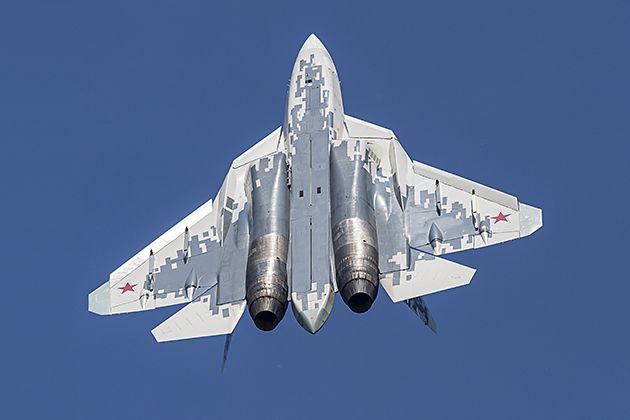
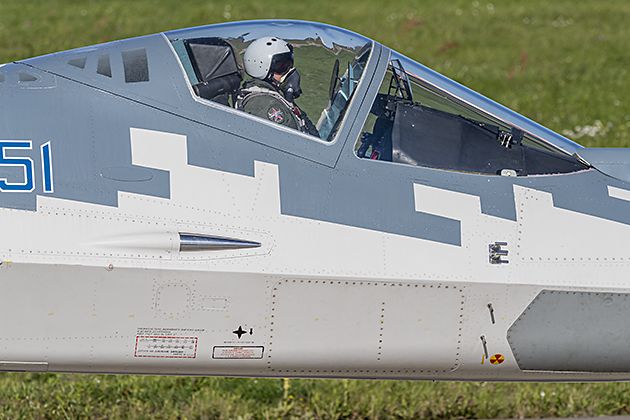
Future production aircraft will be powered by the brand new NPO Saturn Izdeliye 30 thrust vectoring engine (although the first Su-57 delivered will still be powered by the Izdeliye 117 / AL-41F1, but will later be converted to the Izdeliye 30). This engine is still undergoing testing and has only been installed in the second prototype (T-50-2/Bort 052), all other prototypes and pre-series aircraft are still equipped with the modified version of the NPO Saturn Izdeliye 117 engine, which is also used in the Su-35S. The Izdeliye 30 is a 3D thrust vectoring engine with a very high dry thrust of 108 kN, which gives the Su-57 a high supercruise capability. With full afterburner, the thrust of the Izdeliye 30 should be 17.6 kN, this would be almost 15% more than the US Pratt & Whitney F119-PW-100 which powers the Boeing F-22A RAPTOR.
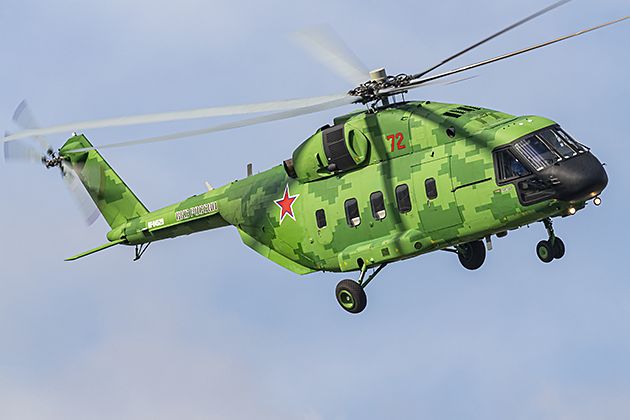
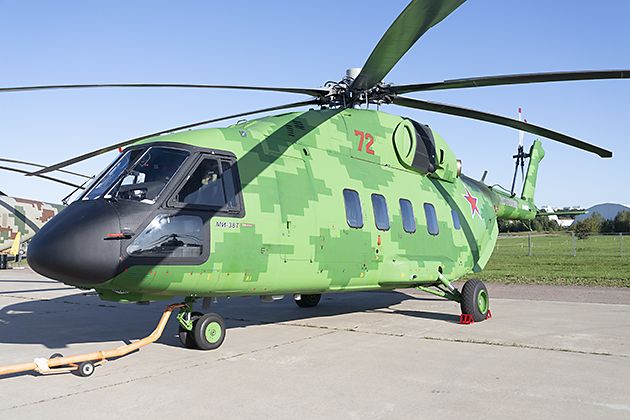
At MAKS 2019 there were some very interesting helicopter highlights. The first public flight demonstration of the new Mil Mi-38T, the latest transport helicopter of the Russian Army, was particularly noteworthy. The Mil Mi-38T made its maiden flight on 23 November 2018 and will replace the ageing fleet of Mi-8 and Mi-17 helicopters. The new camouflage pattern of the Mi-38T was also interesting – Digital Camo with relatively bright green tones. The first example of this new helicopter will be handed over to the troops later this year.
With the Ka-62, Kamov has for the first time taken a conventional approach by employing a tail rotor
R. Kysela
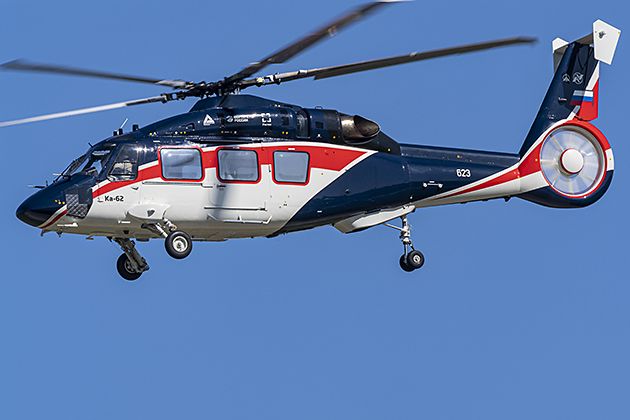
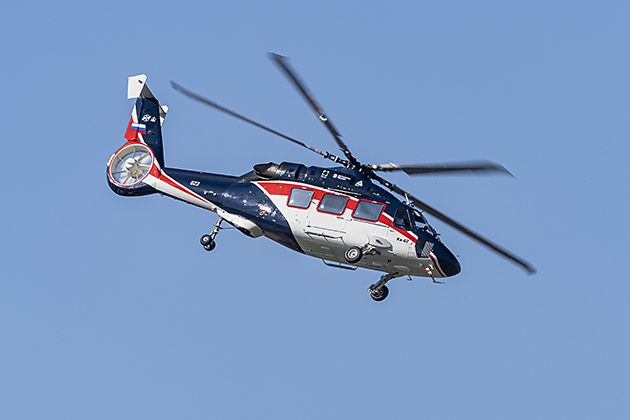
Another debutant at the MAKS was the Kamov Ka-62. Kamov is known for using the coaxial rotor principle in all its helicopters. With the Ka-62, Kamov has for the first time taken a conventional approach by employing a tail rotor. This is, however, like the Eurocopter models EC120/135/145, equipped with a jacket (a so-called FENESTROM) – an absolute novelty for Russian helicopters. Approval for this aircraft is expected by next year. The special feature of this machine is that it was explicitly designed for the harsh Siberian temperatures. According to the manufacturer RUSSIAN HELICOPTERS, it will not require any preheating of the turbine and gearbox until minus 35° Celsius.
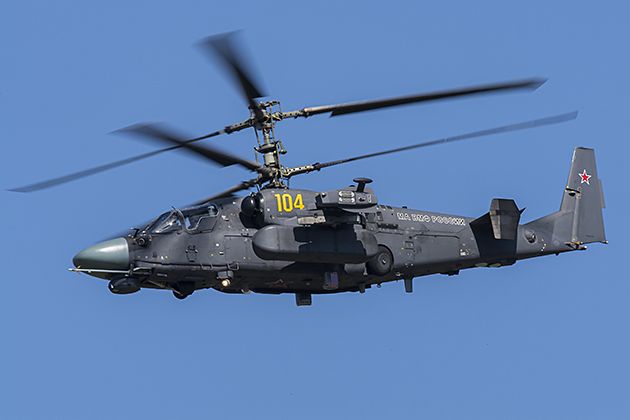
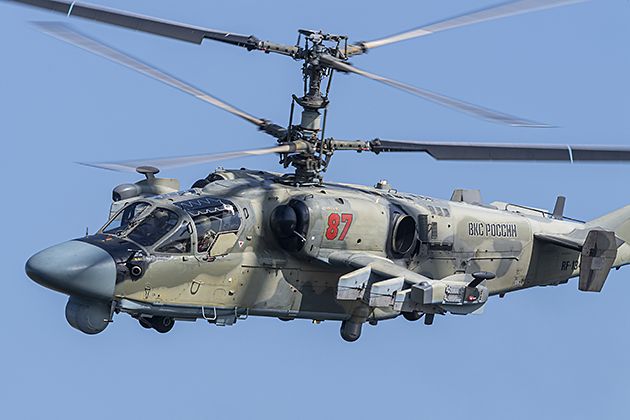
Other Kamov models were also on display at MAKS, including the Ka-32 and Ka-52 Alligator (NATO code HOKUM B). A special feature of this two-seat combat helicopter, apart from its coaxial double rotor design feature, is the fact that both pilots can fly the aircraft. The Ka-52 is extremely agile and is used in the Russian Army as a heavily armed reconnaissance and combat helicopter in addition to the Mil Mi-28NE “NIGHT HUNTER”. A maritime version of the Ka-52 (called Ka-52K “KATRAN”) is currently in series production. The Ka-52 is driven by two Klimov VK-2500 turbines with 2,400 SHP each. These provide the Ka-52 a top speed of just over 300 km/h.
VERDICT: MAKS 2019 counted more than 578,800 visitors till gates closed (for comparison 2017: 452,300 visitors). Numerous contracts and transactions worth a total amount of Euro 3.5 billion were concluded by the end of the fair, but the total order volume, including follow-up orders, is expected to be Euro 5.5 billion. This is roughly in the order of magnitude of MAKS 2017. This means the event can certainly be regarded as a success, although the flight program did not differ much from previous events, this is not at all surprising as the days when a large number of new aircraft came onto the market every two years are long gone. Nevertheless, there were some real highlights and new aircraft to admire, especially the MC-21-300 of course. The next MAKS will take again place in Zhukovsky in July 2021 (as long as the date is not changed to August like last time) – stay tuned & CU there!
Robert Kysela / CHK6

